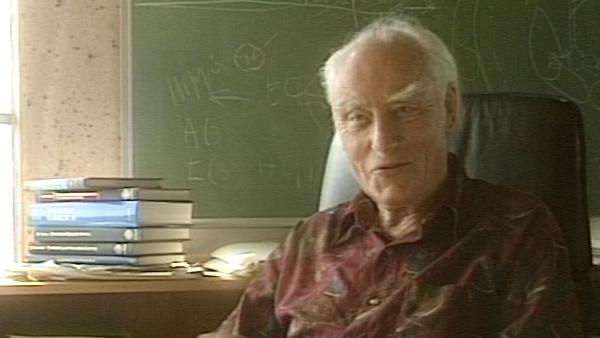NEXT STORY

The importance of the discovery of DNA
RELATED STORIES

NEXT STORY

The importance of the discovery of DNA
RELATED STORIES


|
Views | Duration | |
|---|---|---|---|
| 51. The complexities of working on the brain | 621 | 01:09 | |
| 52. How does the brain control memory and consciousness? | 635 | 01:50 | |
| 53. The question of qualia | 918 | 01:55 | |
| 54. Science and the soul | 651 | 01:09 | |
| 55. How do we see? | 666 | 04:03 | |
| 56. An argument in favour of animal experimentation | 1 | 469 | 02:08 |
| 57. Is the knowledge we have the knowledge we need? | 436 | 01:01 | |
| 58. What's happening in molecular biology now? | 457 | 01:30 | |
| 59. Visual illusions | 1 | 427 | 01:40 |
| 60. The importance of the discovery of DNA | 873 | 02:44 |


Well, there's one which… which one of my editors found particularly surprising in which you have what is called a Necker Cube which is a drawing of a cube, just 12 lines showing the edges of the cube, on a piece of paper so you see 12 lines and you look at it and you see a cube not straight head on but slightly to one side like this, and if you go on looking… looking at it for some part of a second… some part of a minute or something or other, it will flick over and you’ll see a different view of the cube, and then if you keep on looking it’ll flick back to the original one. But there’s nothing actually changing. What’s coming into your eyes is… there’s nothing on the page that’s changing, what’s changing is your interpretation of the three-dimensional picture that you’re seeing which shows very clearly that your brain… and it so happens that two interpretations, because the way the thing is drawn, are almost equally plausible, so the brain looks at one and then that fatigues it in some way and the other takes over in a way we don’t fully understand, and so on, and you see that one… you never see both at once. That shows that what you’re seeing is a constructive process of the brain, you see. And there are a number of other things along those lines. For example, seeing in depth is not only due to see your two eyes but it gets slightly two different views of the scene but if you close one eye you can see in depth especially if you move your head, you see, because there are a lot of other clues in the visual scene which your brain interprets as being depth. Remember there’s no depth, as such, on the image on your eyes.
The late Francis Crick, one of Britain's most famous scientists, won the Nobel Prize in Physiology or Medicine in 1962. He is best known for his discovery, jointly with James Watson and Maurice Wilkins, of the double helix structure of DNA, though he also made important contributions in understanding the genetic code and was exploring the basis of consciousness in the years leading up to his death in 2004.
Title: Visual illusions
Listeners: Christopher Sykes
Christopher Sykes is an independent documentary producer who has made a number of films about science and scientists for BBC TV, Channel Four, and PBS.
Tags: Necker Cube, eyesight, eyes, brain, three-dimensional
Duration: 1 minute, 40 seconds
Date story recorded: 1993
Date story went live: 08 January 2010